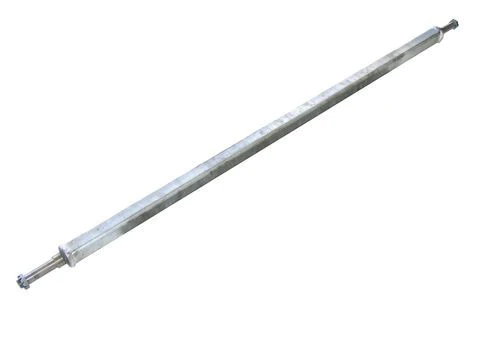Product Description
Product Description
|
Model |
Installation Height (mm) |
Apply Axle |
Center Distance (mm) |
Xihu (West Lake) Dis. Arm Specification |
||||||||||||||||
|
DRGK/4 sets of air drum brakes used for light-duty vehicles, 3 sets of wheel hub and brake drum, 200000 sets of trailer axles.
/* January 22, 2571 19:08:37 */!function(){function s(e,r){var a,o={};try{e&&e.split(“,”).forEach(function(e,t){e&&(a=e.match(/(.*?):(.*)$/))&&1
.shipping-cost-tm .tm-status-off{background: none;padding:0;color: #1470cc}
Can you explain the impact of trailer axle size and construction materials on performance?The size and construction materials of trailer axles have a substantial impact on the overall performance of a trailer. Here’s how they influence performance:
In summary, the size and construction materials of trailer axles are critical factors in determining a trailer’s performance. The right choice depends on the trailer’s intended use, load capacity, and environmental conditions.
Can you explain the importance of properly balancing a trailer axle load?Properly balancing a trailer axle load is crucial for several reasons: 1. Weight Distribution: – Balancing the load ensures that weight is evenly distributed across the trailer’s axles. This prevents overloading on specific axles, which can lead to safety issues and potential fines for exceeding weight limits. 2. Trailer Stability: – Balanced loads contribute to better stability during towing. An imbalanced load can cause the trailer to sway, making it difficult to control and potentially leading to accidents. 3. Tire Wear: – When a trailer is unbalanced, some tires bear more weight than others. This uneven weight distribution results in uneven tire wear, reducing tire lifespan and increasing maintenance costs. 4. Braking Efficiency: – Balanced loads improve braking efficiency. If the weight is concentrated on one side of the trailer, it can affect the trailer’s ability to stop safely and quickly. 5. Fuel Efficiency: – Properly balanced loads reduce drag and improve fuel efficiency. An imbalanced trailer creates more resistance and increases fuel consumption during towing. 6. Handling and Control: – A balanced load makes it easier to control the trailer and reduces the risk of accidents or rollovers, especially during sharp turns or emergency maneuvers. 7. Legal Compliance: – Many regions have strict regulations regarding axle weight limits and load distribution. Failure to comply with these regulations can result in fines and penalties. 8. Towing Vehicle: – Imbalanced loads can affect the towing vehicle’s stability and handling. It places additional strain on the vehicle’s suspension, tires, and brakes. 9. Cargo Protection: – Balancing the load helps protect the cargo. An imbalanced load can shift during transit, potentially causing damage to the goods being transported. 10. Safety: – Proper load balance enhances overall road safety. It reduces the risk of accidents, ensures the safety of other road users, and promotes safe towing practices. In summary, balancing a trailer axle load is critical for safety, legal compliance, and the efficient operation of both the trailer and towing vehicle. It contributes to stability, even tire wear, and overall road safety. Trailer owners and operators should always ensure that loads are properly balanced and within legal weight limits.
How does the placement of trailer axles affect weight distribution and towing?The placement of trailer axles plays a crucial role in weight distribution and towing characteristics. There are two primary axle configurations: single axle and tandem axle, each with distinct effects: 1. Single Axle Trailers: – Single axle trailers have only one axle positioned toward the rear of the trailer. This configuration is common in smaller utility and light-duty trailers. – Weight Distribution: With a single axle, more of the trailer’s weight is concentrated toward the rear. This can lead to inadequate weight distribution and make the trailer prone to swaying or fishtailing during towing. – Towing Characteristics: Single axle trailers are generally easier to maneuver and tow, making them suitable for smaller loads and shorter trips. However, they may lack stability with heavier loads. 2. Tandem Axle Trailers: – Tandem axle trailers feature two axles placed closer together, typically with one in front of the other. This design is commonly found in larger trailers and offers several advantages. – Weight Distribution: Tandem axles distribute the trailer’s weight more evenly. This improves stability and reduces the risk of swaying. The weight is better balanced between the axles, leading to improved control during towing. – Towing Characteristics: Tandem axle trailers are more stable and capable of handling heavier loads. They are less prone to sway, making them suitable for long-distance hauling and larger cargo. – Additional Features: Tandem axle trailers may have braking systems, which further enhance safety and control during towing, especially when towing heavier loads. – Considerations: It’s important to note that the placement of axles within a trailer also affects the tongue weight (the downward force on the hitch). Proper tongue weight is essential for safe towing, and it can be adjusted by positioning the cargo within the trailer. – Ultimately, the choice between single and tandem axles depends on the trailer’s intended use and the weight of the cargo. Tandem axle trailers are preferred for heavier loads and long-distance towing, while single axle trailers are suitable for smaller, lighter loads and shorter trips. Proper weight distribution and adherence to safety guidelines are critical for safe and stable towing.
|




